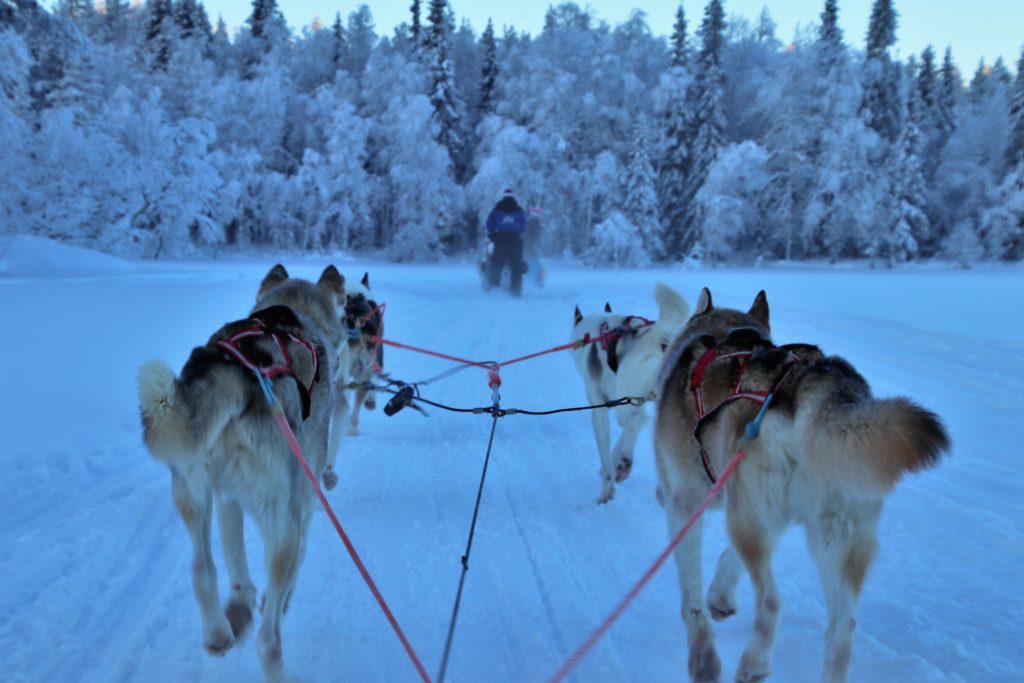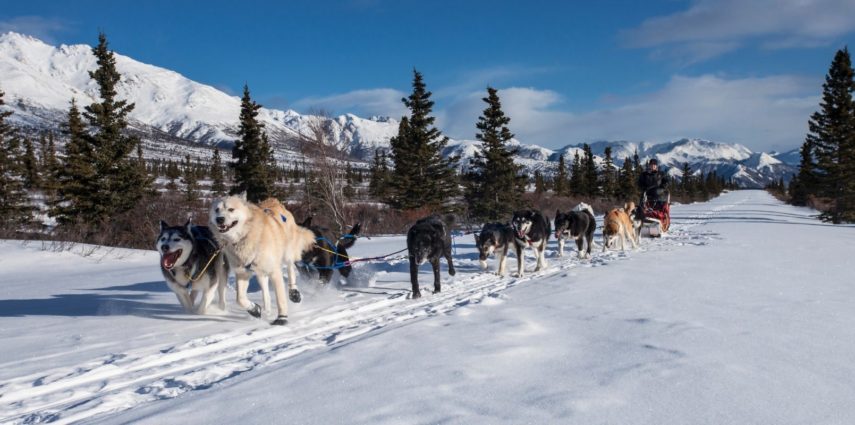Part of what makes the great Iditarod race such an inspirational feat is the level of teamwork necessary at every step.
What looks like a bunch of dogs all doing the same job is actually a multi-faceted team—trained, orchestrated, and equipped by their musher.
A full team is made up of 16 dogs, running in 4 different positions. Every dog has a particular strength, and every musher knows exactly which dogs will play each position best.
It takes the same analysis and social understanding to create a winning team in the workplace!
Let’s look at each pack member in detail and how their strengths translate to your team. Keep in mind which of your own members would thrive in each position.
Who Are Your Lead Dogs?
Lead dogs know their way on the trail without being watched, and you can trust them to make decisions guiding others on the team.
Lead dogs are smart, possess initiative, common sense, and the ability to perform even in less-than-ideal conditions.
How can you tell which of your team members will execute well as a Lead?
Some will take that initiative pretty early. But sometimes you take a leap of faith on an untested pack member— and they surprise you
Let the Leads get to know your heart, and keep them close. Learn to develop a mutual intuition, and give them access where the rest of the team might not have.
Watch for their health so you don’t have to replace them. Make sure their “paws” are in good shape—in other words, make sure they are free to run without anything hindering their running with full potential.
Stay Prepared with Swing Dogs
The best teams have members who can operate in other positions. The Lead can be a burdensome place that wears, wearies, and stresses.
So it’s natural for mushers to have their ‘leaders in waiting’ to run in the next position—which is Swing. These dogs have to be leaders in their own right, and for many, becoming that Lead dog is the next natural step.
Swing dogs are directly behind the leader, understanding the leader’s moves and translating that to the rest of the team.
They ‘swing’ the rest of the team behind them in turns or curves on the trail. They protect the Lead dogs from attempting a turn—only to find the rest of the team choosing not to follow!
They are crucial to making sure everyone makes the journey and stays in sync.
Pro tip: When Swing dogs are able to rotate with the Leads, both sets will remain fresh and the results will show.
The Powerhouses: Your Team Dogs
Not everyone on your team will be a Lead dog. In fact, if you had a pack full of them, your mission would probably fail. Chaos would ensue with everyone trying to lead.
That’s why, settled in the middle, are Team dogs.
They don’t have to be concerned with the stress of leading, and the sled is a comfortable distance behind them. They are free to simply pull with power and run.
These pack members make up the momentum and pull as you need to get the race done. To get the project finished. To keep going towards the prize.
Most of your Team dogs will never be Lead, and they are fine with that. But you know what? If we didn’t have them, we couldn’t do what we do. They are vital to every pack—and every business.
We should accept that the race is not their life—and let them run from 8 to 5 as hard as they can, then clock out and leave it all.
Steady the Sled with Wheel Dogs
Wheel dogs run at the back of the pack, but are important for the steadying element they bring the entire team.
It takes a calm and even temperament to run close to the jolting, unpredictable sled.
These dogs know how to pull with power and steadiness to maneuver the sled around turns and rough bumps. (Not all dogs can handle it, nor should they.)
The “sled” is not always pretty—things like cash flow and layoffs and contingency planning. There are things in your business that not every pack member needs to see and will scare some off.
Which people do you allow close to the sled of business?
Team dogs need to run unhindered from the burdens of the sled. But remember, even Wheel dogs that are closest to the sled are still not on the sled itself.
Though Wheel dogs are seasoned confidantes, people you count on to help you turn the business, they’re not meant to be pack mules for your emotional burdens.
Keep an eye on those boundaries, establish outside sources of emotional care and support, and you’ll keep the Wheel runners—as well as the team as a whole—healthy.

Create Your Racing Team
Of course, your people aren’t actual racing dogs. And you probably don’t wake up every morning, tie on your fur hat, and climb into a wooden sled.
But it’s still true that how well your team performs is in direct proportion to how well you know your people and put them in the right spot on the team.
All positions are necessary. Knowing which ones your team members naturally play and allowing them to run there not only increases their satisfaction, but can lead to better team performance in the long run.
Building the perfect team is rarely a sprint—more like an adventure of endurance that is wildly rewarding to those who take the time to learn and truly prepare.
As always, if I can help you maximize your team’s unique talent, drop me a note using the form below.




